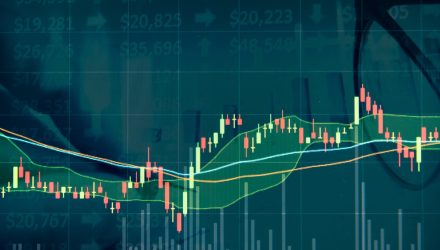Investors can use fixed income exchange traded funds to navigate these difficult times and access potentially attractive opportunities.
In the recent webcast, Navigating Fixed Income: Where to Go with Volatile Rates and Low Yields, Brian McMullen, fixed income ETF strategist at Invesco, underscored the difficulties of finding attractive yields without taking on too much risk in today’s market environment where core bond valuations are now higher than pre-COVID levels.
Many fixed income investors have enjoyed a three-decade long run by just riding on passive indexes that track something like the Bloomberg U.S. Aggregate Bond Index. However, investors who rely too heavily on the Agg are missing out, as the benchmark only represents 42% of the total $57 trillion U.S. fixed income market. To put this in perspective, equity investors who only invest in the S&P 500 capture 89% of the U.S. stock market.
McMullen argued that the Agg’s constraints severely limit its exposure. The U.S. Aggregate Bond Index must be investment-grade, fixed-rate, USD-denominated, and taxable. Consequently, it misses categories like high-yield, bank loans, floating rate corporates, preferreds, TIPS, convertibles, EM USD debt, and tax-exempt munis.
McMullen warned that these missing sectors can help diversify a U.S. Aggregate Index allocation. For example, bank loans show a 0.02 correlation to the Agg, U.S. convertibles has a 0.16 correlation, and high-yield shows a 0.21 correlation.
“Many of the missing sectors offer low correlations to the US Aggregate Bond Index, providing potential diversification benefits,” McMullen said.
Furthermore, the non-core fixed income can offer attractive yields relative to core bonds, McMullen added, pointing out that preferreds show a 4.58% 30-day SEC yield, financial preferreds have a 4.47% yield, variable-rate preferreds have a 3.14% yield, bank loans have a 2.90% yield, and taxable munis have a 1.98% yield. In comparison, the Agg has a 1.28% yield.
Investors can access these categories through related ETF strategies, including the Invesco Taxable Municipal Bond Fund (NYSEArca: BAB), the Invesco Senior Loan ETF (BKLN), Invesco Variable Rate Preferred ETF (VRP), the Invesco Financial Preferred ETF (NYSEArca: PGF) and the Invesco Preferred ETF (PGX).
Investors can also better manage rising interest rate risk ahead through defined maturity ETFs.
“In times of falling interest rates, a laddering strategy keeps a large portion of money invested in securities paying out higher coupons,” McMullen said.
As opposed to other fixed income ETFs that hold a variety of debt securities to achieve their target strategy, the funds in the Invesco suite of BulletShares Defined Maturity ETFs are designed to mature in their specified year, allowing investors to target maturities in an attempt to ladder portfolios or to manage their fixed income exposure in a focused time frame.
These defined-maturity bond funds typically buy bonds that mature in the year that the ETF will terminate, ensuring that investors can collect the bonds’ face value at maturity, along with a steady income stream along the way. As such, investors are meant to buy-and-hold these securities until maturity.
In contrast, a regular bond ETF runs the risk of losing its original principal if interest rates go up, depending on the bond ETF’s effective duration, since typical bond funds would buy and sell debt securities to maintain their target short-, intermediate- or long-duration strategy.
Using target-date bond funds, an investor could create a bond ladder strategy in a portfolio with varying maturity dates. The bonds’ maturity dates are evenly spaced across several years so that the proceeds from maturing bonds may be reinvested at regular intervals.
Financial advisors who are interested in learning more about fixed income strategies can watch the webcast here on demand.
